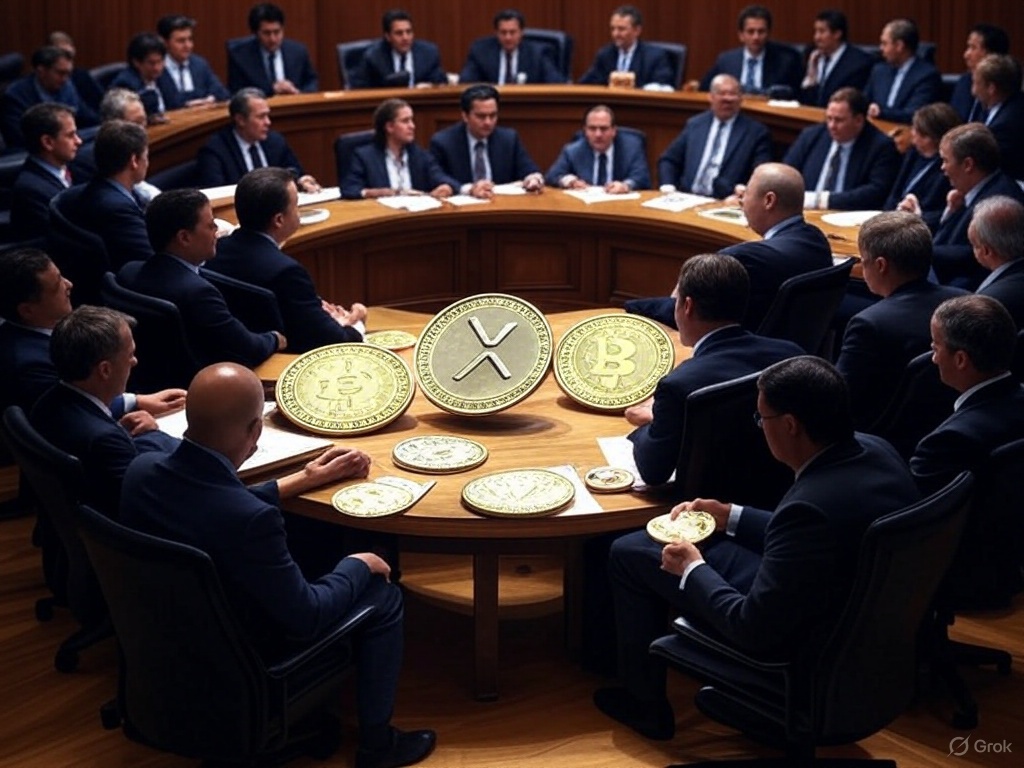In a move that’s sent shockwaves through the Web3 world, President Donald Trump has thrust the spotlight onto a trio of altcoins—XRP, Solana (SOL), and Cardano (ADA)—by naming them as potential pillars of a proposed U.S. national cryptocurrency reserve. Announced on March 2, 2025, this bold vision has ignited a firestorm of debate, pitting crypto purists against advocates of a more diverse digital asset strategy. While Bitcoin (BTC) and Ethereum (ETH) were predictable inclusions, the decision to elevate these American-born altcoins has left the industry buzzing with both excitement and skepticism.
Trump’s plan, first teased during his election campaign as a “national Bitcoin stockpile,” took an unexpected turn when he revealed on Truth Social that XRP, SOL, and ADA would join the ranks of the reserve. The announcement triggered an immediate market frenzy: XRP soared 33%, SOL climbed 22%, and ADA rocketed over 60% in a matter of hours. Yet, the euphoria was short-lived. By March 4, prices had plummeted 21%, erasing gains as traders grappled with profit-taking and broader economic headwinds, including Trump’s new tariffs on Canada, Mexico, and China. The volatility underscored a lingering question: do these altcoins truly belong in a strategic reserve?
Critics wasted no time pouncing on the proposal. Bitwise executives and veteran trader Peter Brandt slammed the inclusion of XRP, SOL, and ADA, arguing that Bitcoin alone embodies the stability and institutional trust required for a reserve asset. “Crypto tokens like ETH, SOL, XRP, and ADA simply don’t fit the ‘reserve’ framework,” remarked Anthony Pompliano, a prominent Bitcoin advocate, highlighting their perceived lack of liquidity depth. In a recent 24-hour period, Bitcoin’s trading volume dwarfed its peers at $54.8 billion, compared to XRP’s $5.5 billion, SOL’s $5.4 billion, and ADA’s $3.6 billion—a disparity that skeptics say exposes their fragility for large-scale reserves.
Yet, proponents see a different story—one of innovation and national pride. All three tokens hail from U.S.-based projects, a fact not lost on supporters who argue they bring unique strengths to the table. XRP, backed by Ripple, has carved a niche in cross-border payments, with heavyweights like American Express and SBI testing its capabilities. Solana’s high-speed blockchain powers a thriving ecosystem of decentralized applications, while Cardano’s research-driven approach promises long-term scalability. “The inclusion of altcoins like SOL, with its high-speed transactions, adds technological diversity,” noted Yu Xiong of the University of Surrey, suggesting a reserve need not mirror the rigidity of gold or oil stockpiles.
The backlash from within the crypto community has been fierce, however. Gemini co-founder Cameron Winklevoss expressed dismay, joining Coinbase CEO Brian Armstrong in advocating for a Bitcoin-only reserve. “I have nothing against XRP, SOL, or ADA, but they’re not suitable for a Strategic Reserve,” Winklevoss posted on X, echoing a sentiment that altcoins lack the gravitas of Bitcoin’s proven track record. Even Ripple’s CTO defended XRP’s inclusion by highlighting its utility, while Cardano founder Charles Hoskinson fired back at critics like Peter Schiff, touting XRP’s resilience and global adoption.
Beneath the surface, some speculate Trump’s altcoin gambit is a calculated negotiation tactic—a classic “ask for 1000 to settle at 500” play from his real estate days. Analysts like Ilan Solot of Marex Solutions suggest the mention of XRP, SOL, and ADA might be a strategic overreach to secure Congressional approval for a BTC- and ETH-centric reserve. With the White House Crypto Summit slated for March 7, 2025, the industry is on edge, awaiting clarity from Trump’s team, including crypto czar David Sacks.
For now, the proposal remains a lightning rod. Its fate hinges on Congressional approval—a process that could stretch into months or years—leaving investors and innovators to ponder the implications. Is this a visionary step toward cementing the U.S. as the “crypto capital of the world,” as Trump claims, or a misstep that risks diluting the credibility of a national reserve? As the dust settles, one thing is clear: in the Wild West of Web3, Trump’s latest move has ensured that XRP, SOL, and ADA are no longer just altcoins—they’re at the heart of a high-stakes debate shaping the future of digital finance.

Reading Time: 3 minutes











